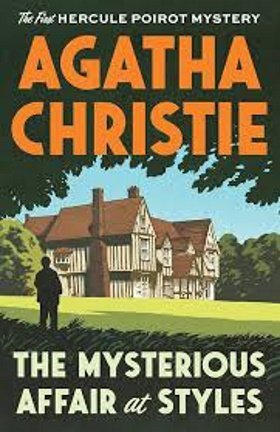“A woman’s happiness, mon ami,” he said gravely.
I did not quite know what to say.
“The moment has come,” said Poirot thoughtfully, “and I do not know what to do. For, see you, it is a big stake for which I play. No one but I, Hercule Poirot, would attempt it!” And he tapped himself proudly on the breast.
After pausing a few minutes respectfully, so as not to spoil his effect, I gave him Lawrence’s message.
“Aha!” he cried. “So he has found the extra coffee-cup. That is good. He has more intelligence than would appear, this long-faced Monsieur Lawrence of yours!”
I did not myself think very highly of Lawrence’s intelligence; but I forebore to contradict Poirot, and gently took him to task for forgetting my instructions as to which were Cynthia’s days off.
“It is true. I have the head of a sieve. However, the other young lady was most kind. She was sorry for my disappointment, and showed me everything in the kindest way.”
“Oh, well, that’s all right, then, and you must go to tea with Cynthia another day.”
I told him about the letter.
“I am sorry for that,” he said. “I always had hopes of that letter. But no, it was not to be. This affair must all be unravelled from within.” He tapped his forehead. “These little grey cells. It is ‘up to them’—as you say over here.” Then, suddenly, he asked: “Are you a judge of finger-marks, my friend?”
“No,” I said, rather surprised, “I know that there are no two finger-marks alike, but that’s as far as my science goes.”
“Exactly.”
He unlocked a little drawer, and took out some photographs which he laid on the table.
“I have numbered them, 1, 2, 3. Will you describe them to me?”
I studied the proofs attentively.
“All greatly magnified, I see. No. 1, I should say, are a man’s finger-prints; thumb and first finger. No. 2 are a lady’s; they are much smaller, and quite different in every way. No. 3”—I paused for some time—“there seem to be a lot of confused finger-marks, but here, very distinctly, are No. 1’s.”
“Overlapping the others?”
“Yes.”
“You recognize them beyond fail?”
“Oh, yes; they are identical.”
Poirot nodded, and gently taking the photographs from me locked them up again.
“I suppose,” I said, “that as usual, you are not going to explain?”
“On the contrary. No. 1 were the finger-prints of Monsieur Lawrence. No. 2 were those of Mademoiselle Cynthia. They are not important. I merely obtained them for comparison. No. 3 is a little more complicated.”
“Yes?”
“It is, as you see, highly magnified. You may have noticed a sort of blur extending all across the picture. I will not describe to you the special apparatus, dusting powder, etc., which I used. It is a well-known process to the police, and by means of it you can obtain a photograph of the finger-prints of any object in a very short space of time. Well, my friend, you have seen the finger-marks—it remains to tell you the particular object on which they had been left.”
“Go on—I am really excited.”
“Eh bien! Photo No. 3 represents the highly magnified surface of a tiny bottle in the top poison cupboard of the dispensary in the Red Cross Hospital at Tadminster—which sounds like the house that Jack built!”
“Good heavens!” I exclaimed. “But what were Lawrence Cavendish’s finger-marks doing on it? He never went near the poison cupboard the day we were there!”
“Oh, yes, he did!”
“Impossible! We were all together the whole time.”
Poirot shook his head.
“No, my friend, there was a moment when you were not all together. There was a moment when you could not have been all together, or it would not have been necessary to call to Monsieur Lawrence to come and join you on the balcony.”
“I’d forgotten that,” I admitted. “But it was only for a moment.”
“Long enough.”
“Long enough for what?”
Poirot’s smile became rather enigmatical.
“Long enough for a gentleman who had once studied medicine to gratify a very natural interest and curiosity.”
Our eyes met. Poirot’s were pleasantly vague. He got up and hummed a little tune. I watched him suspiciously.
“Poirot,” I said, “what was in this particular little bottle?”
Poirot looked out of the window.

























